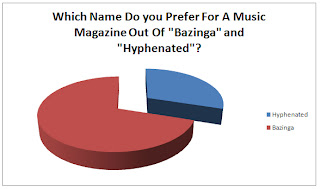Before I start to create my own magazine product, I wanted to research the pages within a magazine. As I liked the layout, genre and overall appearence of the Kerrang magazines, these are the ones that I wanted to look at in more detail.
Above I have started to look at this double page spread. The colours again are strict and keep to a colour scheme. This time of dark pink, grey, black and white. The layout of the page is very balanced between the two pages. The large image on the left and the title and text/interview on the right.
Similarly to the front cover and contents page, the text, or at least the titles, are placed infront of coloured shapes to help them become more prominent on the page. The image of the star (above left) is a mid shot (head to waist shot). His clothes are rather casual and yet link with the rock genre. His image (rock) seems obvious because of the stereotypical features such as the tatoo's, dyes hair and just his overall appearence and layed back stance. The two pages are framed by white cicles which could represent the lights around a dressing table.
The font for the main title changes size and colour. This now only attracts the audience to read this pag/artical but provides variety. The main and largest sentance within this title use the largest text, emphasisizes the fact that this is the title and will draw the audience in, a quote is also used to give an incite into wha tthe story/interview involves. The change in colour also provides variety on the magazine.
Every aspect of this page has been planned out carefully. I would like to take all of these techniques into account when creating my own magazine.
This is another double page spread by Kerrang. This is slightly different to the one above as this page is darker and uses more images. The interview/story is also lain out differently to the last as there are no titles, this seems to be more like a story than an interview.
Similarly to the previous image, the title is a quote and is the largest text on the page. The colours are again tvaried on the title and the colour scheme is selective, kept to just black, white and red. There are more images included on this page, I like the use of the 'strip' at the bottom. They have also been edited to appear to be in a 'sepia' tone.
Looking at these two variations of a double page spread, I have been able to take ideas and techniques from both in which I like to the use within my own work. For exampl,e I prefer the interview style layout of the first page (using titles/questions back with shapes). Yet I prefer the image layout of the second page (image strip).
























